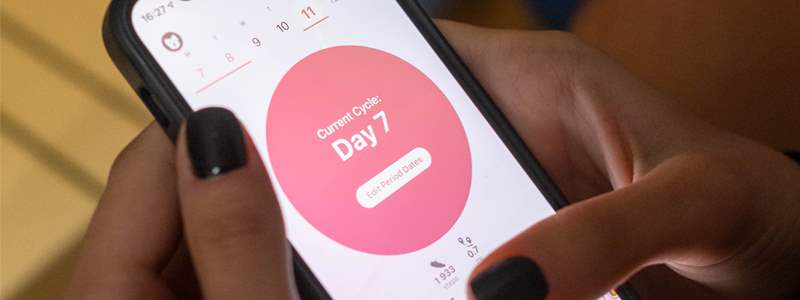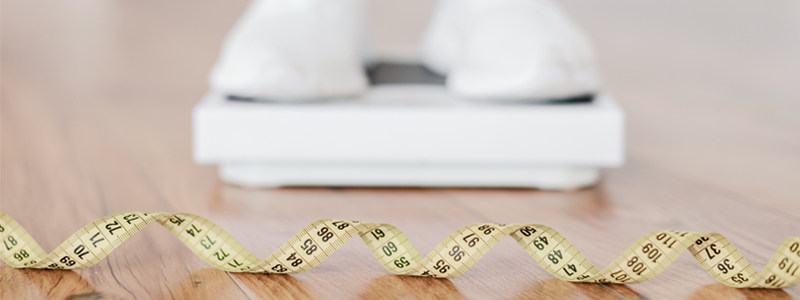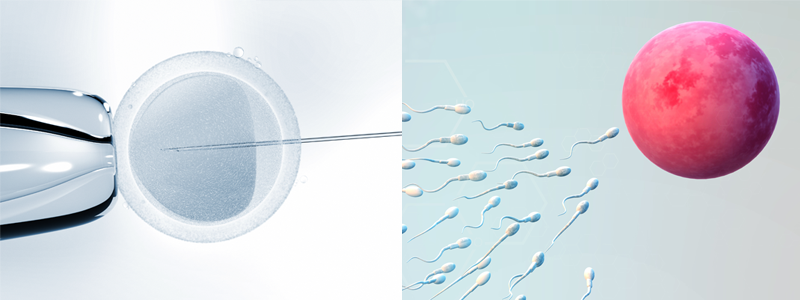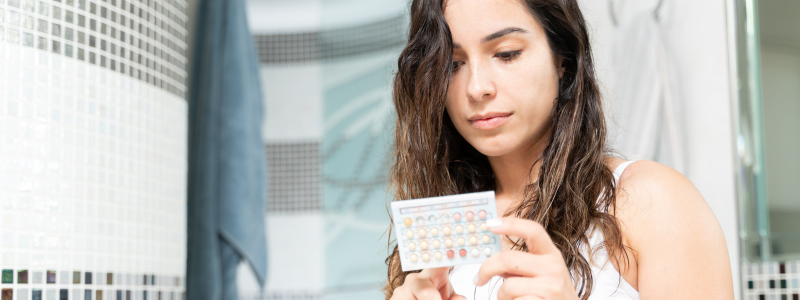When planning a pregnancy, one of the best ways to help increase your chances of getting pregnant is to understand when you might be ovulating and when your ‘fertile window’ is. So, how can i track my ovulation, and what do you need to know about it?
When is the fertile window?
Every woman’s natural cycle typically has a short window of fertility around your ovulation, when your chances of conceiving are increased.
Understanding your own natural cycle can help you to pinpoint the best time for conception. The length of a menstrual cycle varies from woman to woman, but the average is around 28 days. Some women’s cycles can be longer or shorter than this, generally ranging from 21-40 days, which is completely normal!
Providing your periods are regular, ovulation tends to happen about 14 days before your next period starts. For this reason, keeping track of when your period starts and ends every month will help you predict when you’re next due to ovulate.
What are the different stages of the menstrual cycle?
A woman’s natural cycle can be divided into four different stages:
- Menstrual phase: (otherwise known as your period): This phase, which involves the shedding of the lining of the womb, occurs in response to the drop in oestrogen and progesterone levels when a pregnancy doesn’t occur that cycle. On average, a typical period can last anywhere from 2-7 days and involve the loss of around 3-5 tablespoons of blood
- Follicular phase: This is the time between the first day of the period and ovulation. The pituitary gland releases follicle-stimulating hormone (FSH) which stimulates the ovaries to mature follicles – each follicle can contain an egg, of which the healthiest selected follicle will grow and mature. As the follicles grow, they make oestrogen, which thickens and develops the lining of the womb.
- Ovulation phase: This is when an egg is released from the ovary. Your LH and oestrogen levels will peak before ovulation, and then drop shortly after. The ‘LH surge,’ detected by home urinary LH testing kits. The egg released should be picked by the fallopian tube in order to meet the sperm, get fertilised and form an embryo. The fertilised egg ( embryo) will travel to the uterus for implantation
- Luteal phase: This is the time between ovulation and menstruation, when the hormone progesterone prepares the already thickened lining of the womb, ready to receive a fertilised egg. Progesterone is produced by the ‘corpus luteum’, which forms from the ovulated follicle. If a pregnancy doesn’t occur, the corpus luteum breaks down and the progesterone levels drop. This leads to the breakdown and eventual shedding of the lining of the womb, known as your period.
When in my cycle should I be trying for a baby and how can I tell when I’m at this stage?
To help improve your chances of getting pregnant, the best stage of your cycle to try for a baby is in the run up to, and during, your ovulation phase. This is called your ‘fertile window’. As you may know, the sperm can live within the female reproductive tract (your womb and tubes) for up to 4- 5 days, the egg however, only survives for 24 hours after ovulation. As such, if you have sex every 2-3 days in the run up to ovulation there will always be healthy sperm in the right place when you ovulate. Likewise, regular intercourse throughout the follicular phase of your cycle every 2-3 days will ensure sperm are present in the tubes at the right time, regardless of when your fertile window is.
However, if you want to know when you are entering the ‘fertile window,’ tracking your periods and monthly cycle is one way to help you. Once you know the average length of your cycle, you can subtract 14 days to give you a rough guide to your day of ovulation. Alternatively, use our ovulation calculator.
You can also use ovulation test kits – these are often available at local pharmacies. If you use an ovulation test kit, a positive test will show that your levels of the hormone LH are high, meaning you are likely to ovulate within the next 36 hours. For this reason, it is best to try and conceive in following 24-36 hours after a positive test, so that sperm are present in the tubes when ovulation occurs.
Your body may also show some signs to indicate that you are currently ovulating, which can include:
- Increased vaginal discharge, which may become clear and stretchy, like raw egg white
- Light bleeding or spotting (Persistent bleeding between your periods or after sex is not normal and should prompt you to see your doctor)
- Increased sexual drive
- Ovulation pain, characterised by discomfort or pain on one side of the abdomen
How does IVF affect my cycle, including Natural and Mild IVF?
If you have been trying to conceive naturally for a year or more without success, you should speak to your GP or book an initial consultation with one of our friendly clinicians to discuss your options. You might find your doctor recommends IVF to help you get pregnant. If you do decide to try IVF, it is important to understand how the treatment works and how it may affect your own natural cycle.
Some, more ‘conventional’, IVF treatments involve higher dosages of stimulation drugs. This type of IVF shuts down the natural cycle, before stimulating follicle growth with higher dose FSH, aiming to collect a high number of eggs. Women can find this form of IVF has a greater treatment burden on them compared with mild and natural cycle IVF. So for those who want to opt for a gentler type of IVF, or one which works with their own natural cycle, therefore reducing the physical and mental burden of treatment, Natural and Mild IVF may suit them best.
Natural and Mild IVF either use no drugs or much lower dosages of FSH injections than conventional IVF. It is aimed at higher “quality” and not “quantity” of eggs and reducing side effects and complications such as Ovarian Hyperstimulation Syndrome (OHSS) and improving health outcomes for mother and baby.
Whether you are trying to get pregnant naturally or looking at starting IVF treatment, understanding your own natural cycle is a really important step in helping you to conceive. If you have been struggling to conceive or are considering IVF, contact us now to find out how we can help you.





